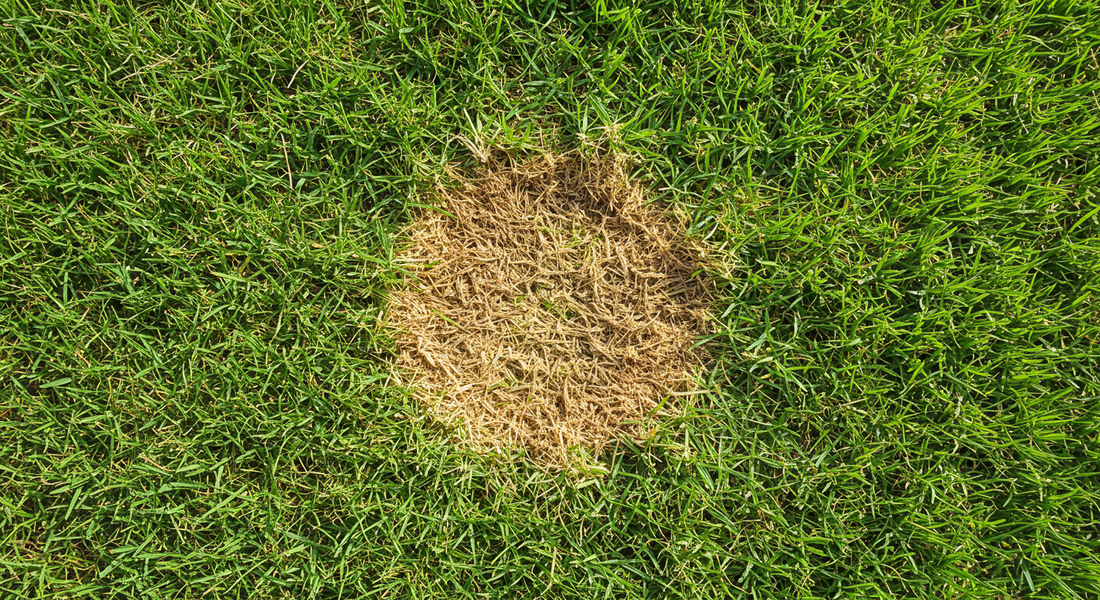
What Are These Brown Spots in My Lawn? A Diagnostic Guide
Share
There's nothing more frustrating for a homeowner than watching a lush, uniformly green lawn develop mysterious brown spots. It's a distress signal from your grass, but decoding that signal can be tricky. Is it thirsty? Is it sick? Is it under attack? Don't panic.
Diagnosing the problem is the first step toward fixing it. This step-by-step guide will help you identify the common culprits behind brown spots and map out a plan to get your lawn healthy and green again.
Common Culprit #1: Drought and Dormancy
Before assuming the worst, consider the simplest explanation: your lawn is thirsty. During periods of high heat and low rainfall, grass will enter a state of dormancy to conserve water, turning brown in the process.
-
How to Tell: Drought-stressed grass will have a slightly bluish-green tint before it turns brown. Another key indicator is footprinting; if you walk on the grass and your footprints remain visible for a long time, the blades lack the moisture to spring back.
-
The "Screwdriver Test" and Recovery: Try pushing a long screwdriver into the soil in both a brown spot and a green spot. If it slides easily into the green area but is difficult or impossible to push into the brown area, the ground is likely too hard and dry. The recovery plan is to implement a deep and infrequent watering schedule—watering for a longer duration but only once or twice a week—to encourage deep root growth.
Common Culprit #2: Lawn Fungus and Disease
If watering isn't helping, you might be dealing with a fungal disease. Warm, humid weather creates the perfect breeding ground for various lawn fungi.
-
Identifying Patterns: Lawn fungus treatment starts with identification. Fungal diseases often appear in distinct patterns. For example, Brown Patch typically creates rough circular patches that can be several feet in diameter, sometimes with a dark ring around the edge.
-
Treatment and Prevention: Fungicides are available, but prevention is key. Avoid watering late in the evening, as grass that stays wet overnight is more susceptible to fungus. Aerating your lawn annually can also improve drainage and air circulation, making the environment less hospitable for disease.

Common Culprit #3: Insect and Grub Damage
If the brown patch feels spongy and pulls up easily, you may have an insect problem, most likely grubs.
-
The "Tug Test": Grab a handful of the brown grass and give it a gentle pull. If the turf peels back like a carpet with no roots holding it down, you have grub damage lawn. Grubs are beetle larvae that feed on grassroots, killing the plant from below.
-
The Grub Life Cycle and Treatment: Grubs are most active and vulnerable in the late summer and early fall. This is the optimal time to apply a grub killer. Treating them effectively will prevent them from turning into beetles that will lay more eggs in your lawn for the following year.
Common Culprit #4: Pet Urine (Fido's Spots)
If your brown spots are small, round, and often have a very green ring around the edge, you can likely blame your furry friend.
-
Why Dog Urine Burns Grass: Dog urine is high in nitrogen. While nitrogen is a fertilizer, the concentrated amount in a single spot acts like a chemical burn, killing the grass. The "halo effect" of the green ring is caused by the less-concentrated nitrogen at the edges of the spot, which actually fertilizes the grass.
-
Solutions for Repair and Prevention: To fix dog urine spots lawn, rake out the dead grass, apply a thin layer of topsoil and seed, and water thoroughly. To prevent them, encourage your dog to use a specific, non-grassy area of the yard and flush areas where they do urinate with plenty of water as soon as possible.
Other Potential Causes
If none of the above culprits seem to fit, consider these possibilities:
-
Chemical Spills: Spilling gasoline while filling a mower or over-applying fertilizer can kill grass in a distinct spot.
-
Dull Mower Blades: Blades that aren't sharp will tear grass blades instead of cutting them cleanly. The ragged, torn ends will then die and turn brown.
Conclusion: From Diagnosis to a Healthy, Green Lawn
Finding the brown spots in lawn fix is a process of elimination. By carefully observing the patterns, performing a few simple tests, and considering the recent weather and activities in your yard, you can accurately diagnose the problem. Once you know the cause, you can apply the right solution and get back on the path to a healthy, uniformly green lawn.
